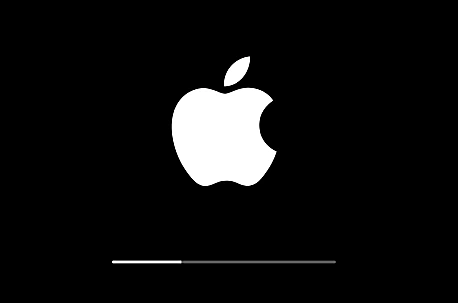Get New Samsung S9 For $1

Can you spot what’s new on Samsung’s Galaxy S9? Zoom in on its camera
If a new phone debuts and no one can spot what’s different, does it matter?
Samsung unveiled its new flagship Galaxy S9 phone Sunday, and I got to take a first look in advance. At one point, I set the S9 side by side with last year’s Galaxy S8 ... and then couldn’t figure out which was which.
Get out your magnifying glasses, folks: The S9’s screen margins are a smidge slimmer at the top and bottom. The fingerprint reader on the back moved an inch toward the middle. The biggest change is that the camera aperture now physically opens and closes.
What's obvious is that smartphone tech has hit a plateau. Samsung’s theory may be not to mess with success: The S8 design (now passed to the S9) was revolutionary, beating Apple’s iPhone X to the all-screen look by several months. And there’s less at stake for Samsung after putting to rest concerns about exploding batteries.

Can you spot the new phone? This year's Galaxy S9 is on the left, and last year's Galaxy S8 is on the right. (Geoffrey A. Fowler/The Washington Post)
But in the United States and other developed markets, we’re holding on to our phones longer and longer. Samsung's targets for the $720 S9 aren't just owners of the S8 — they may still be holding on to an S6 or older. So what, if anything, would make a new Android phone worth an upgrade?
Samsung chose to double down on the camera. And for anyone who treats smartphone photography as a hobby or form of communication, a few of the S9’s improvements may pique interest — though they still need to be tested.

The Galaxy S9+ has two lenses and a fingerprint scanner in the middle. And it comes in sparkly lilac. (David Orr for The Washington Post)
There are actually two new phones arriving in stores beginning March 16: the S9 with a 5.8-inch diagonal screen and the S9+ with a 6.2-inch diagonal screen. On the larger phone, Samsung added a second lens on the back for zooming in and depth-effect shots. (This has become standard on large high-end phones.)
On both models, the S9 promises improvements to photo quality. The camera will take up to 12 separate shots at once to combine into one 12 megapixel image, reducing pixelated noise in some shots.
Its slow-motion is now super slow — 960 frames per second — to capture every hilarious millisecond. A new mode can detect movement and automatically begin recording.

The camera aperture on the Galaxy S9 can flip between F1.5 and F2.4 in different lighting conditions. (David Orr for The Washington Post)
And the S9 camera has a geeky but impressive trick on its aperture, the opening where light comes in. Most smartphone cameras are stuck with a one-size-fits-all aperture. The S9 can flip between two apertures: opening up for 28 percent more light in the dark and closing back up for bright shots. When it switches, the camera looks as though it’s winking.
Will any of this make a noticeable difference in your shots? I’m looking forward to putting it in a three-way death match vs. the Pixel 2 and iPhone X, both of which have a fixed aperture.
Over on the front camera, the S9 isn’t letting the iPhone X have all the fun with its augmented-reality Animojis, those cartoons you make come to life by moving your head.
Samsung’s answer is AR Emoji, and it advances the idea with a cartoon that looks kind of like you.

AR emoji make a cartoon avatar you animate with your face. Here's tech columnist Geoffrey Fowler. Or is it?
The S9 auto-generates personal AR Emoji based on a photo. Mine looked like a cross between me and Jay Leno. (Or maybe that’s Tim Cook?) Regardless, it’s fun to be the star.
Still, I was surprised Samsung didn’t go all in on AR with front-facing depth sensors, as the iPhone X uses to unlock the phone and do other tricks with your face. (Samsung plays up its multiple unlock options, which use the same tech as last year. The S9 can unlock with facial recognition, but it isn’t as secure as Apple’s Face ID. There’s also a secure iris reader and a trusty fingerprint scanner on the back.)
The S9 has lots of other little improvements, from a faster processor to louder sound. It’s also one of the few flagship phones left that still comes with a standard headphone jack and the ability to add your own storage.
But the S9 doesn’t tackle many of my bigger wishes for smartphones, such as new tech that can embed the fingerprint reader conveniently inside the front screen.
Or there’s my big wish: better battery life. The S9’s battery might last a tiny bit longer, they say — but I keep hoping for a quantum leap.
So, is any of that enough to get you to upgrade? The new phone will cost about the same as last year's flagship: Unlocked, it's $720 for the S9 and $840 for the S9+. (There will be some variation in price: AT&T says it will sell the new models for $790 and $915, respectively.)
One lure may be a new trade-in deal in the U.S: You’ll get $350 back for an existing S8. It’s available for preorder March 2nd.
The Post Recommends
Fifty years ago on March 16, 1968, 100 U.S. soldiers committed one of the worst atrocities in American military history.
Officials don't expect to find more survivors after a pedestrian bridge collapsed at Florida International University. A student was among those killed.
Review
The camera on Samsung's new Galaxy S9 edges out the iPhone X and Google Pixel 2. We mounted all three on a stick to test them all at once.
Market Watch
Dow 24,103.11
Today 1.07%
S&P 2,640.87
Today 1.38%
NASDAQ 7,063.44
Today 1.64%
Close
Market Watch
Dow 24,103.11
Today 1.07%
S&P 2,640.87
Today 1.38%
NASDAQ 7,063.44
Today 1.64%
Close











![[Gallery] These Are The Most Promising Crypto Currencies Right Now [Gallery] These Are The Most Promising Crypto Currencies Right Now](https://images.outbrain.com/transform/v3/eyJpdSI6ImIzMzUwMGU5ODZlYjIzMzQ1NTBjODA4ZmI0Nzc3NTZjYjk2NGRmMzJmOGQwMGQxYzUxMDFhZGQxMjhjMzExYTUiLCJ3IjozMDUsImgiOjIwMiwiZCI6MS41LCJjcyI6MCwiZiI6MH0.webp)



